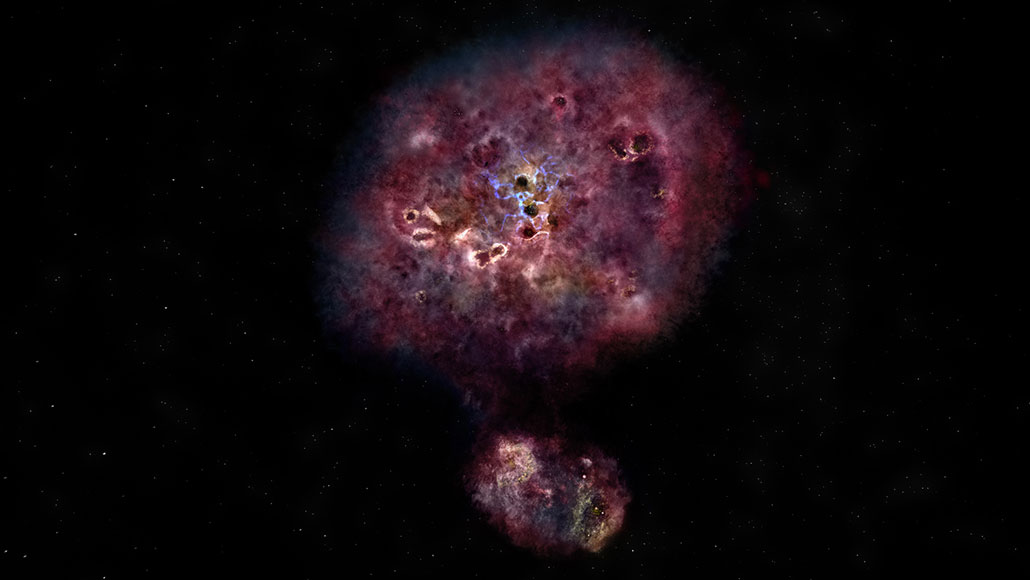
A gargantuan galaxy in the early universe that grew quickly and then just stopped forming stars might, in its star-making phase, have once resembled the massive dusty galaxy illustrated here. Such a reservoir of dust and gas may have helped fuel rapid star formation.
NRAO/AUI/NSF, B. Saxton







